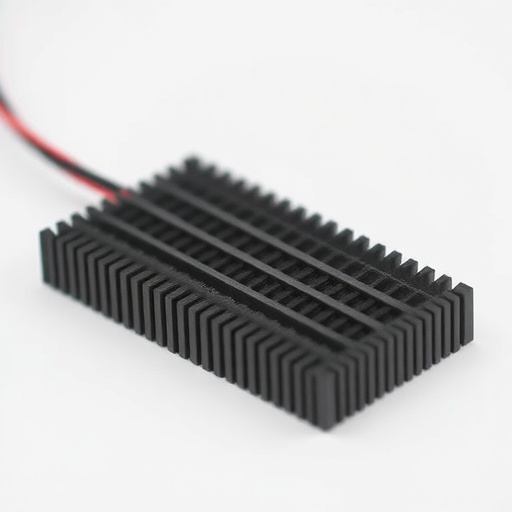Recent advancements in sustainable energy storage technologies are continuously shaping the landscape of modern engineering and materials science. One of the most noteworthy developments comes from a recent study that focuses on the synthesis of supercapacitor electrodes using mahogany seed shells. The research highlights a profound and innovative approach to harnessing agricultural waste, demonstrating potential not only in energy applications but also in emphasizing sustainable materials development.
Supercapacitors are rapidly becoming a focal point for energy storage solutions, offering the ability to deliver rapid bursts of energy and significantly extend the lifecycle of electronic devices. Their efficiency and performance can be substantially improved through proper electrode engineering. In this groundbreaking study, researchers, led by R. Farma, employed activated carbon derived from mahogany seed shells, enhanced further by the incorporation of carbon nanotubes. This dual-material approach opens new avenues in supercapacitor technology.
Mahogany seed shells represent a ubiquitous agricultural waste product that has generally been overlooked. Traditionally discarded or underutilized, these shells provide an excellent resource for creating activated carbon, a key component in various energy storage applications. The researchers’ meticulous method involved the thermal activation of these shells, resulting in a porous carbon structure ideal for electrochemical applications. This not only mitigates waste but also capitalizes on sustainability principles, merging waste management with innovative energy solutions.
In the activation process, the cellulose-rich mahogany seed shells undergo thermal decomposition, leading to a carbonized material that exhibits high surface area and porosity. These characteristics are critical for supercapacitors, where increased surface area correlates strongly with energy storage capacity. The present research provides evidence that mahogany seed shells can yield activated carbon with outstanding performances comparable to commercially available materials. This discovery is a significant stride toward greener materials in electrical engineering.
Moreover, the inclusion of carbon nanotubes enhances the performance of the activated carbon electrodes dramatically. Carbon nanotubes, renowned for their exceptional conductivity and structural integrity, improve the overall conductivity of the electrode material. Their unique one-dimensional structure offers pathways for electron transport, thereby facilitating rapid charge and discharge rates. This synergy between activated carbon from mahogany seed shells and carbon nanotubes positions the electrodes for superior functionality in energy storage systems.
The environmental implications of such a study are profound. By converting waste agricultural materials to high-value products, we not only reduce landfill contributions but also minimize the need for synthesizing more carbon technologies that heavily rely on fossil fuels and environmentally detrimental practices. The researchers advocate that this approach can serve as a model for other waste materials, creating a ripple effect across various industries striving for sustainability.
Energy-related applications serve as a crucial context for this research. With the global demand for efficient energy storage rising due to the proliferation of renewable energy resources, the development of sustainable materials for supercapacitors is more critical than ever. This study sheds light on how agricultural waste can be transformed into functional materials that significantly contribute to energy transition efforts. There is an unrealized potential in tapping into natural resources that abound in many regions, which presents opportunities for greener technologies.
Furthermore, the optimization of the synthesis process involved fine-tuning parameters such as temperature and activation time. This meticulous research allowed for an understanding of how various conditions could affect the surface morphology and electrochemical properties of the activated carbon. By experimenting with these variables, the researchers successfully maximized the performance metrics of the derived supercapacitor electrodes, paving the way for industrial applications.
The practical implications of using mahogany seed shells extend beyond mere academic interest; they address real-world utility in businesses and industries focused on renewable energy solutions. In a world increasingly conscious of carbon footprints, the potential for utilizing agricultural waste offers a sustainable pathway for future innovations in energy technologies. As this research gains traction, it highlights an essential narrative: sustainability in energy solutions can emerge from the most unexpected places.
As the research community eagerly anticipates further developments, the groundwork laid by this study functions as a catalyst for ongoing innovation. The implications for further exploration of agricultural waste are substantial. Whether it’s exploring different types of seed shells or other organic waste products, this research underscores the importance of interdisciplinary approaches in addressing global challenges.
The future of energy storage technologies holds immense promise when empowered by sustainable materials engineering. Each advancement, such as the one stemming from the activation of mahogany seed shells and carbon nanotubes, reinforces a narrative of synergy between technology, sustainability, and innovation. With continued research and development, the prospect of cleaner technologies that benefit both consumers and the environment draws nearer.
This enthusiasm for sustainability is mirrored in the broader scientific community. With collective efforts in interdisciplinary research, the potential for breakthroughs in supercapacitors expands. Other materials may be identified that mirror or exceed the properties demonstrated in this study, creating a continuous cycle of innovation. The pathway forward is certainly illuminated, and it beckons an era where waste becomes a resource, and sustainability is woven into the very fabric of technological advancement.
In conclusion, the research led by R. Farma and colleagues offers exciting prospects for sustainable energy storage solutions through ingenious material innovation. The synthesis of supercapacitor electrodes from mahogany seed shells-derived activated carbon modified with carbon nanotubes brings a unique approach to overcoming energy storage challenges. As the study sheds light on the capabilities of agricultural waste, it serves as a reminder of the importance of rethinking our approach towards energy materials and the significance of sustainability in shaping our future.
Subject of Research: Sustainable supercapacitor electrodes from agricultural waste
Article Title: Sustainable supercapacitor electrodes from mahogany seed shells-derived activated carbon modified with carbon nanotubes.
Article References:
Farma, R., Sitinjak, P.E., Apriyani, I. et al. Sustainable supercapacitor electrodes from mahogany seed shells-derived activated carbon modified with carbon nanotubes.
Ionics (2025). https://doi.org/10.1007/s11581-025-06716-0
Image Credits: AI Generated
DOI: https://doi.org/10.1007/s11581-025-06716-0
Keywords: Supercapacitors, activated carbon, sustainability, mahogany seed shells, energy storage, carbon nanotubes.




